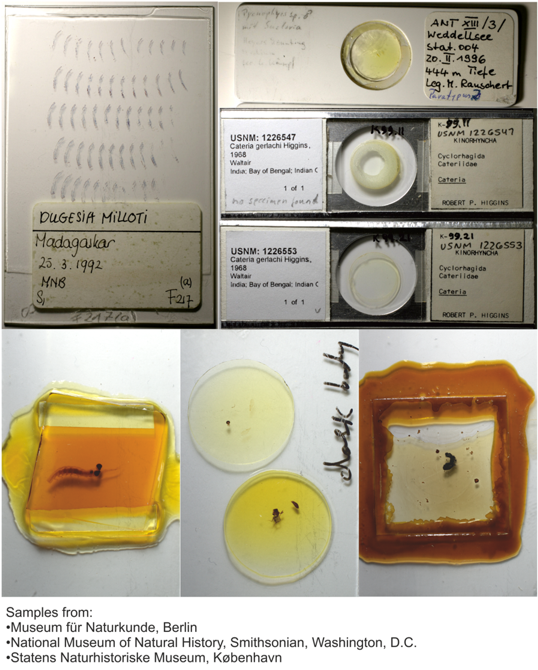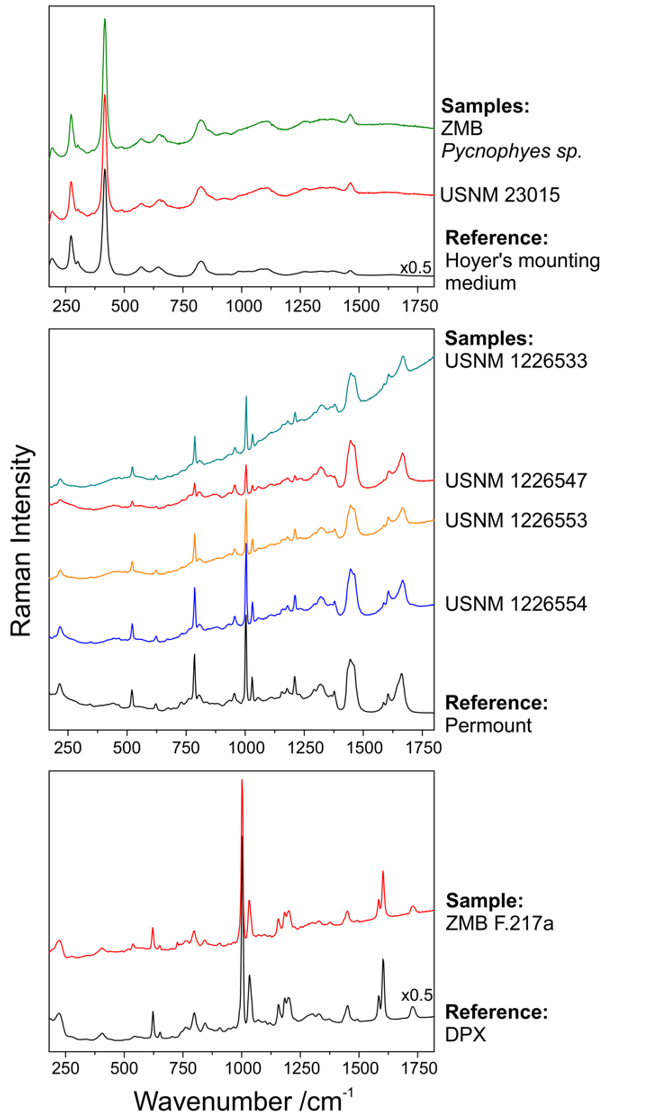Microscope slides from natural history collections
Throughout the history of preparation of biological samples for microscopy, the choice of the mounting medium was sometimes dictated merely by availability of the used media. Thus, a plethora of resins and other organic polymers are found to serve as mounting agents in microscope slide collections of museums of natural history. Dramatically, in some cases the used mounting media can already be observed to have undergone crystallization and other decomposition processes within few years of mounting demanding immediate action in restoring as well as an imminent precaution in conservation. Therefore, the identification of the used agent as well as its current ageing stage is of great interest for the biologist community. In collaboration with Dr. Birger Neuhaus from Museum für Naturkunde Berlin and Dr. Jens Riedel from BAM, we demonstrated that Raman microspectroscopy provides nondestructive analysis of historical microscope slides without any prior sample preparation. Comparison of sample spectra with data from our own reference library enables the unambiguous identification of the medium, assignment of bands to its individual components and conclusions on its present ageing status (e.g., evaporation of the solvent).


Examples of aged microscope slide samples and Raman spectra of their mounting media (colored traces) in comparison with the corresponding reference spectra (black traces)
(adapted from Zool. Anz. 265, 2016, 178).
Publications:
B. Neuhaus, T. Schmid, J. Riedel, Zootaxa 4322 (2017) 1-173.
T. Schmid, R. Jungnickel, B. Neuhaus, J. Riedel, J. Kneipp, C. Lüter, Zool. Anz. 265 (2016) 178-190.
